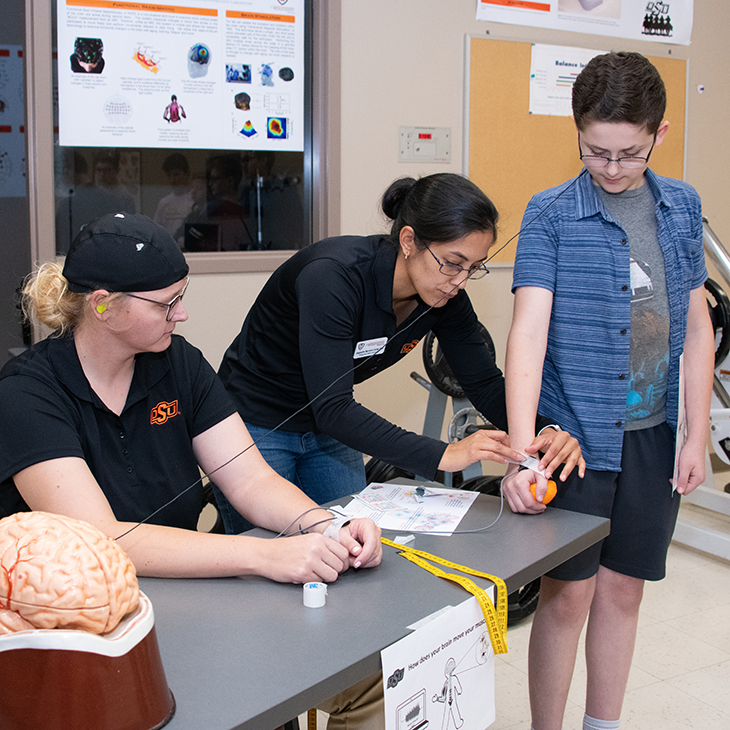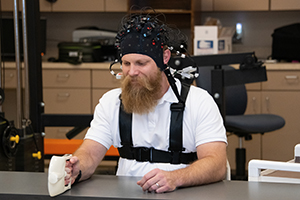
Brain Blast: Local students visit OSU Applied Neuromuscular Physiology Laboratory
Wednesday, October 30, 2019
Faculty and graduate students in the Oklahoma State University Applied Neuromuscular Physiology Laboratory recently hosted seventh-grade students from Stillwater Middle School for a day of hands-on learning, specifically related to brain activity. The Brain Blast event is one of many outreach initiatives coordinated by the lab to engage youth in science, technology, engineering and mathematics (STEM) learning.
“STEM fields are important because they train our future leaders to tackle the complex issues that challenge our society,” said Dr. Jason DeFreitas, associate professor of health and human performance in the OSU College of Education, Health and Aviation. “Events like these are catalysts that can spark interest in young boys and girls to enter the STEM fields. The students who attend our events also learn more than what is presented from our brain-related lesson plan. For example, they also get to see how diverse our laboratory group is, which helps reinforce the message that science is for everyone.”

Students were introduced to state-of-the-art technology and tools used to study the brain, including the lab’s new virtual dissection table. With the swipe of a finger, users can label organs and cut through the life-sized images of the human body revealing the complex inner workings. A functional brain imaging demonstration using a wearable cap allowed students to see which parts of the brain become active during specific tasks. The mobile, functional Near-Infrared Spectroscopy System (fNIRS) reveals brain activity by detecting changes in cortical blood flow. Additionally, students got an up-close look at how the brain controls the body using Transcranial Magnetic Stimulation (TMS). The technique sends a single, very short pulse to activate the part of the brain under the coil. This completely safe demonstration stimulates a specific area of the motor cortex causing the muscles to move.

“These students have been learning about brains and neurons in their class, and now they got to see first-hand how we study them in our teaching and research labs,” said DeFreitas. “I’m a big supporter of using play and exploration to learn, and technology like the virtual dissection table allows individuals to explore the human body and learn how it all fits together. By the end of the day, students are asking questions like ‘Could we make someone walk by stimulating their brain?’ or ‘Could this help someone who was paralyzed?’ Overall, the visit was a great success!”
Media Contact: Rachel Potts | 405-744-8320 | rachel.potts@okstate.edu
